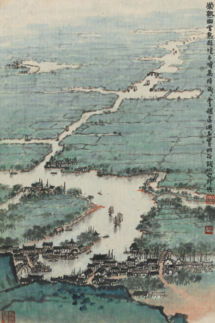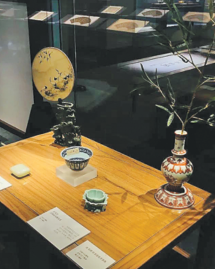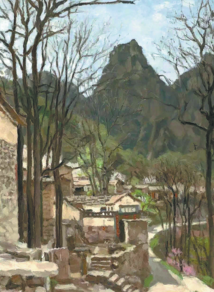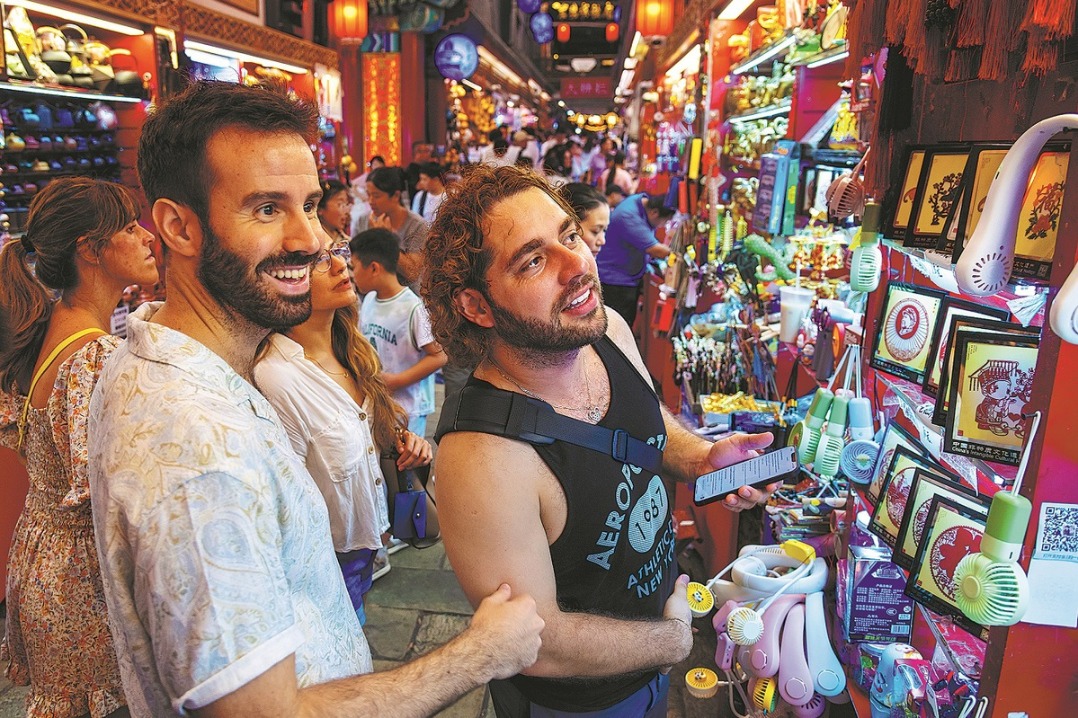What's on

Landscape master
Qian Songyan is among the greatest creators of classic Chinese mountain-and-water paintings of the 20th century. His works in the collection of the National Art Museum of China have shown at exhibitions in the past. Recently, the museum received two paintings from two members of Qian's family, Lin Xiaoshan and Sun Jie. The couple donated two landscape paintings from the early 1960s, representing Qian's endeavor in combining cultural traditions with the artistic requirements of the socialist construction era. One painting is Ode to Yan'an, which depicts a landmark pagoda on top of a hill in Yan'an, Shaanxi province, hub of the Chinese communist movement. Another work is Xiling Gorge, which shows mountains along the Yangtze River that constitute a marvelous view of the gorge, one of the largest of its kind. The works are in reminiscence of Qian's art approach — infusing realism with revolutionary romanticism. The two paintings are on show at Rocks and Evergreen Pines, an exhibition through Nov 9 at the museum in Beijing, where some 29 Qian landscapes from the collection are displayed. It surveys the creation of landscape paintings in the 1950s and '60s, a prime time in Qian's life and work.
9 am-5 pm, closed on Mondays. 1 Wusi Dajie, Dongcheng district, Beijing. 010-6400-1476.
Emperor's leisure
Of the emperors and empresses in Chinese history, Qing Dynasty (1644-1911) ruler Qianlong sealed his name as one of the longest reigning and most accomplished. He was an avid art collector and sponsor, enthusiastically trying his hand at painting and writing. The works of art he treasured often bear poems he composed and dozens of impressions of seals he ordered for engraving. He led a rich cultural life both during his reign and in retirement. Emperor Qianlong's Elegant Life, a long-term exhibition at Nanjing Museum, Jiangsu province, brings together nearly 70 objects of different categories from the museum's collection, offering a glimpse into Qianlong's taste in art and philosophical take on life. The first part displays artifacts that present the emperor's poetic compositions. A pair of porcelain teacups, with a poem by Qianlong titled San Qing Cha ("three-clear tea"), is shown. This type of tea was prepared with plum blossoms, citron fruit and pine nuts, and made with snow water, indicating "integrity, luck and longevity". It is said that Qianlong offered the tea to senior officials in his court at feasts. The second part focuses on Qianlong's six inspection tours of Jiangnan, where he left samples of his writing and painted scenic areas he stayed in. The third part shows works by politicians who served Qianlong and whose cultural and artistic approaches impressed him.
9 am-5 pm, closed on Mondays. 321 Zhongshan Donglu, Xuanwu district, Nanjing, Jiangsu province.025-8480-7923.
Natural spirit
Spirit of China, an ongoing exhibition at the art gallery of China Academy of Oil Painting, teams up dozens of artists who have committed to exploring the presentation of nature with their brushes. It is a show of the endeavors to continuously implant the language of oil painting deeply in the rich soil of Chinese history and cultural traditions, whether using figurative or abstract approaches. The exhibition is, according to its curator Yang Feiyun, a reinforcement of the role of nature as an infinite source of inspiration for artists, and how nature has shaped or been shaped by human activities.
9 am-5 pm, closed on Mondays.1704 Culture and Art New Street, Gaobeidian, Chaoyang district, Beijing. 010-8773-9327.



Today's Top News
- China's industrial profits down 1.8% in H1
- Thailand responds to Trump's ceasefire call
- Recall vote shows DPP's manipulation runs against Taiwan people's will: mainland spokesperson
- Top DPRK leader visits China-DPRK Friendship Tower
- China proposes global cooperation body on AI
- Scholars propose inclusive human rights framework






























